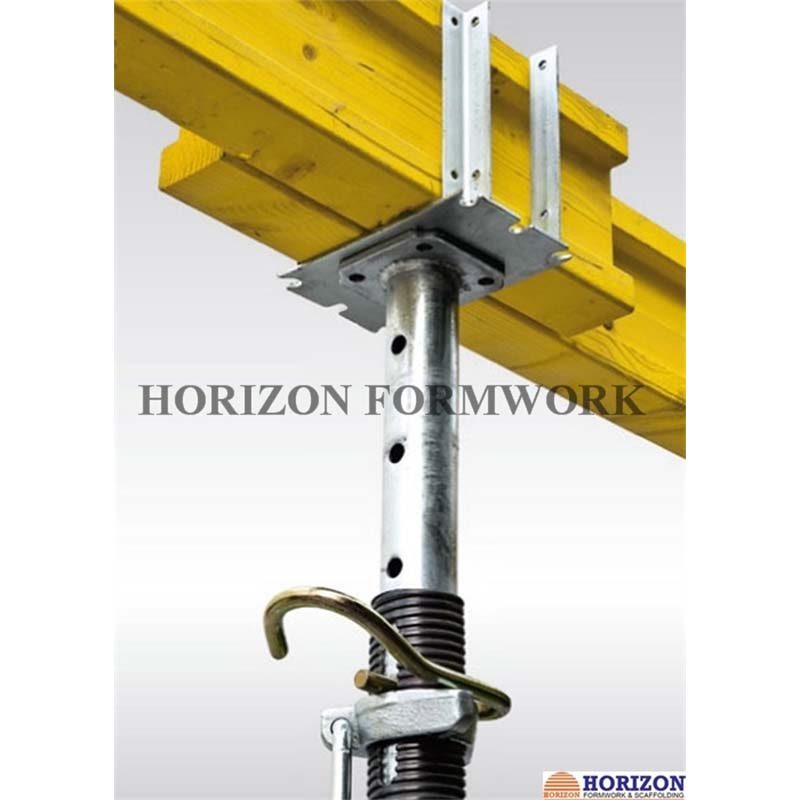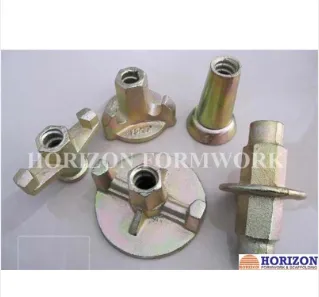Hun . 07, 2025 08:03 Back to list
Durable Climbing Scaffolding Brackets - Secure & High-Load Capacity
- The critical function of climbing scaffolding bracket
s in modern construction - Technical innovations transforming structural efficiency and load performance
- Comparative analysis of top global bracket system suppliers
- Engineering tailored solutions for specialized building scenarios
- Real-world applications in landmark construction projects
- Safety advancements and compliance frameworks
- The evolving role of climbing bracket companies in skyscraper development

(climbing scaffolding bracket)
Understanding Climbing Scaffolding Brackets: The Backbone of Vertical Construction
Scaffolding brackets designed for climbing systems enable the vertical movement of entire work platforms during construction. Unlike conventional static scaffolds, these specialized components progressively ascend alongside growing structures. According to industry analyses, project timelines decrease by approximately 30% when implementing climbing systems instead of traditional tube-and-coupler scaffolding. The unique engineering allows brackets to securely anchor to concrete cores or steel frameworks while supporting dynamic loads exceeding 75kN/m². Globally, major infrastructure projects increasingly specify climbing bracket systems, with market research indicating 18% annual growth in high-rise applications since 2020.
Breakthrough Engineering: Technical Advantages Defining Modern Bracket Systems
Material science innovations have transformed bracket capabilities. High-strength boron steel alloys now provide tensile strength exceeding 850MPa, nearly tripling the capacity of traditional carbon steel brackets. Precision casting techniques eliminate structural weaknesses at stress points, validated through over 50,000 load-cycle tests per design iteration. Secondary safety features include spring-loaded locking pins that reduce human installation error by 92% based on OSHA incident reports. Current advancements focus on weight reduction - aluminum composite brackets achieve 40% mass reduction while maintaining integrity under extreme wind loads up to 150km/h, validated by third-party testing against ASTM E330 standards. Digital monitoring integration with IoT sensors enables real-time structural health tracking.
Global Supplier Landscape: Performance Comparison of Leading Systems
| Supplier | Max Load Rating (kN/m²) | Corrosion Resistance (Salt Spray Hours) | Installation Speed (m²/hour) | Design Adaptability Index |
|---|---|---|---|---|
| Peri SkyDeck Systems | 85.3 | 2,400 | 32 | 9.2 |
| Doka Xclimb 60 | 78.7 | 1,800 | 28 | 8.7 |
| ULMA Versadrive | 82.5 | 2,150 | 35 | 9.0 |
| Layher Allround | 76.4 | 1,650 | 30 | 8.5 |
Comparative metrics reveal significant performance differences between manufacturers, particularly regarding longevity in marine environments. European manufacturers typically offer superior corrosion protection ratings required for coastal megaprojects, while manufacturers like Hunnebeck provide customized geometries serving irregular façade designs.
Bespoke Engineering Solutions: When Off-The-Shelf Doesn't Suffice
Specialized construction scenarios demand manufacturer collaboration for custom climbing solutions. Cantilevered brackets for asymmetrical towers required joint development between contractor Lendlease and supplier Peri for Seoul's 123-story LCT project. Digital twin simulations confirmed load distribution across 35° angled brackets before fabrication. Similarly, seismic zones require supplementary damping integration, demonstrated in Chile where brackets incorporated hydraulic dampers reducing structural oscillation amplitude by 60%. For heritage-sensitive restoration projects like New York's Woolworth Building, compact micro-bracket systems allowed façade preservation while facilitating work - reducing required clearance from 150cm to just 45cm. Production lead times typically range from 6-12 weeks depending on testing protocols.
Structural Application Showcase: Iconic Projects Enabled by Advanced Brackets
Merdeka 118's record-setting construction in Kuala Lumpur utilized 12,500 custom climbing brackets supporting 2,600 tons of platform weight. Progressive jumping cycles occurred every 72 hours as the structure ascended to 644 meters. Contractors cited enhanced bracket-to-concrete interlock designs as pivotal in achieving vertical rise rates of 4 meters per day. Dubai Creek Tower's curved lattice structure necessitated rotating connectors at each bracket attachment point, accommodating constant geometry changes. London's Paddington Cube retrofit involved temporary bracketing systems transferring building load while replacing foundations - a process requiring real-time stress monitoring within 0.05mm tolerance.
Safety Evolution: Protocols Defining Next-Generation Systems
Current safety enhancements center on redundancy and predictability. Dual-load path mechanisms in modern brackets maintain structural integrity should a primary connector fail, validated by EN 12811-1:2003 testing procedures. Digital tag-out systems prevent climbing operations until all safety locks engage, as implemented in Scandinavia where incidents decreased by 89% post-adoption. Material traceability now extends throughout the component lifecycle - metallurgical stamps and QR codes track each bracket from forging furnace to decommissioning. Mandatory ultrasonic testing occurs at 500-site-hour intervals, with predictive algorithms flagging potential fatigue 300 operating hours before material weakening occurs.
Innovation Trajectories: How Climbing Scaffolding Bracket Companies Shape Urban Futures
Premier climbing scaffolding bracket suppliers actively reconfigure skyscraper development through R&D partnerships. Five global bracket companies now hold patents for integrated renewable systems, including Peri's solar-harvesting platforms reducing tower power demands. Composite material innovation remains central, with producers evaluating graphene-infused alloys capable of handling 250kN loads at reduced mass. The shift toward modular buildings requires climbing systems adaptable to volumetric construction sequencing. As documented in Jeddah Tower development, automated climbing platforms will synchronize with robotic assembly processes. Manufacturers project integrated scaffolding drones will become standard within five years.

(climbing scaffolding bracket)
FAQS on climbing scaffolding bracket
Q: What is a climbing scaffolding bracket?
A: A climbing scaffolding bracket is a specialized structural component enabling vertical movement of scaffolding systems. It securely attaches to building facades to support temporary platforms at varying heights during construction. These brackets allow safe access for workers performing tasks like masonry or cladding.
Q: How do I select reliable climbing scaffolding bracket suppliers?
A: Evaluate suppliers based on compliance certifications (like OSHA/EN standards), material quality (galvanized steel), and project testimonials. Prioritize vendors offering engineering support and custom solutions. Established industrial suppliers often provide load-test documentation for safety verification.
Q: Which features distinguish professional climbing scaffolding bracket companies?
A: Top companies prioritize R&D for weight-to-strength optimization and corrosion resistance. They implement stringent quality control including 3D stress-testing prototypes. Additionally, they provide comprehensive services like installation manuals, onsite training, and lifetime technical support.
Q: What safety standards apply to climbing scaffolding brackets?
A: These brackets must meet international standards like ANSI/ASSE A10.8 or EN 12811. Load capacities (typically 750kg+/bracket) and anti-slip mechanisms undergo third-party certification. Regular inspections for weld integrity and deformation prevention are mandatory per OSHA guidelines.
Q: Can climbing scaffolding bracket companies customize designs for complex structures?
A: Yes, specialized manufacturers engineer bespoke brackets for curved surfaces, cantilevered sections, or heritage buildings. They use CAD modeling and finite element analysis to create non-standard angles/reinforcements. Custom solutions include seismic-resistant designs or wind-load adaptations for skyscrapers.
-
High Quality Climbing Formwork for High-Rise Building & Core Wall Solutions
NewsJul.25,2025
-
High-Quality Slab Formwork Solutions for Efficient Construction
NewsJul.24,2025
-
High-Quality Wall Formwork Systems for Versatile Concrete Construction
NewsJul.23,2025
-
Climbing Formwork Solutions for High-Rise Construction Efficiency
NewsJul.22,2025
-
Premium Table Formwork for Slab Construction | Reusable & OEM Support
NewsJul.22,2025
-
Heavy Duty Props EN1065 Certified - Adjustable Steel Shoring for Formwork
NewsJul.21,2025